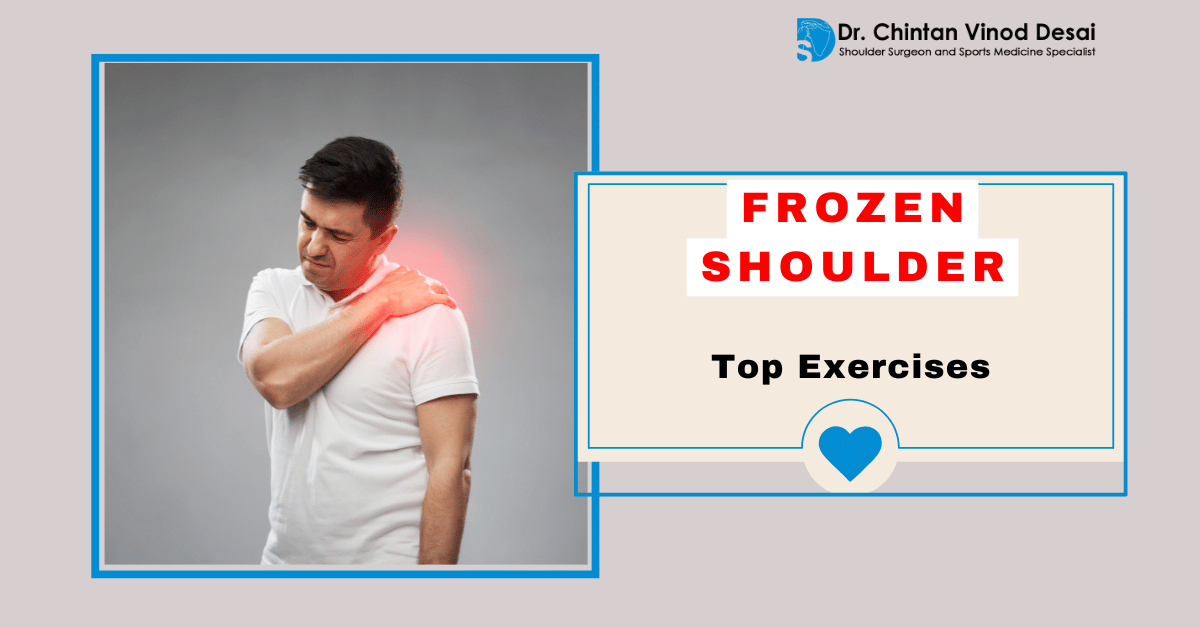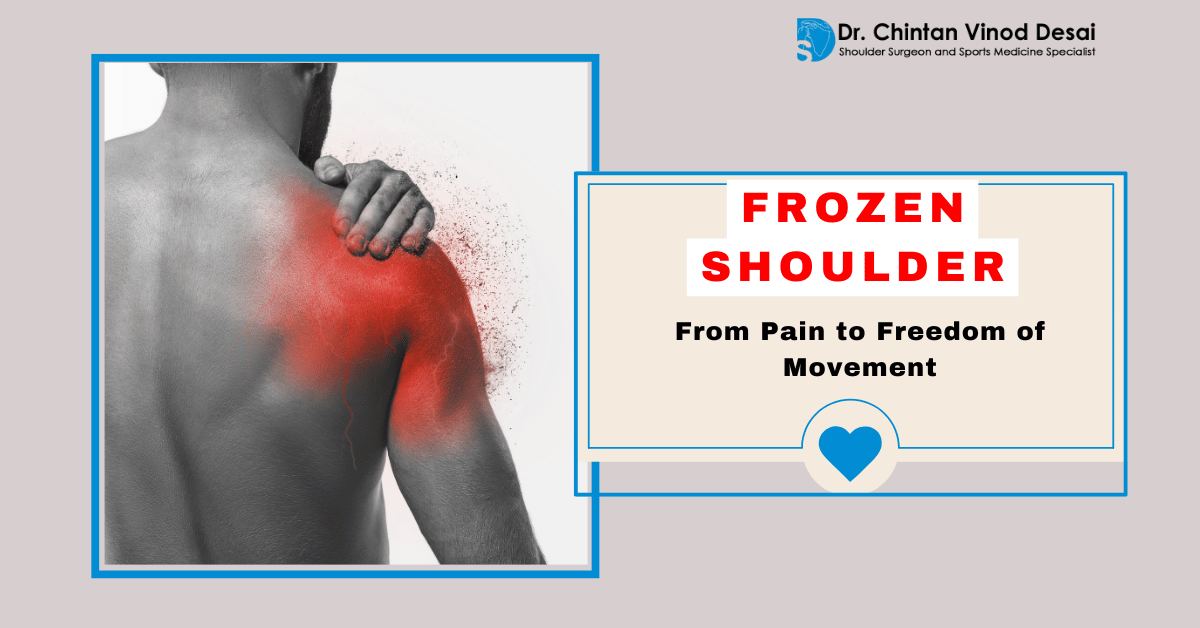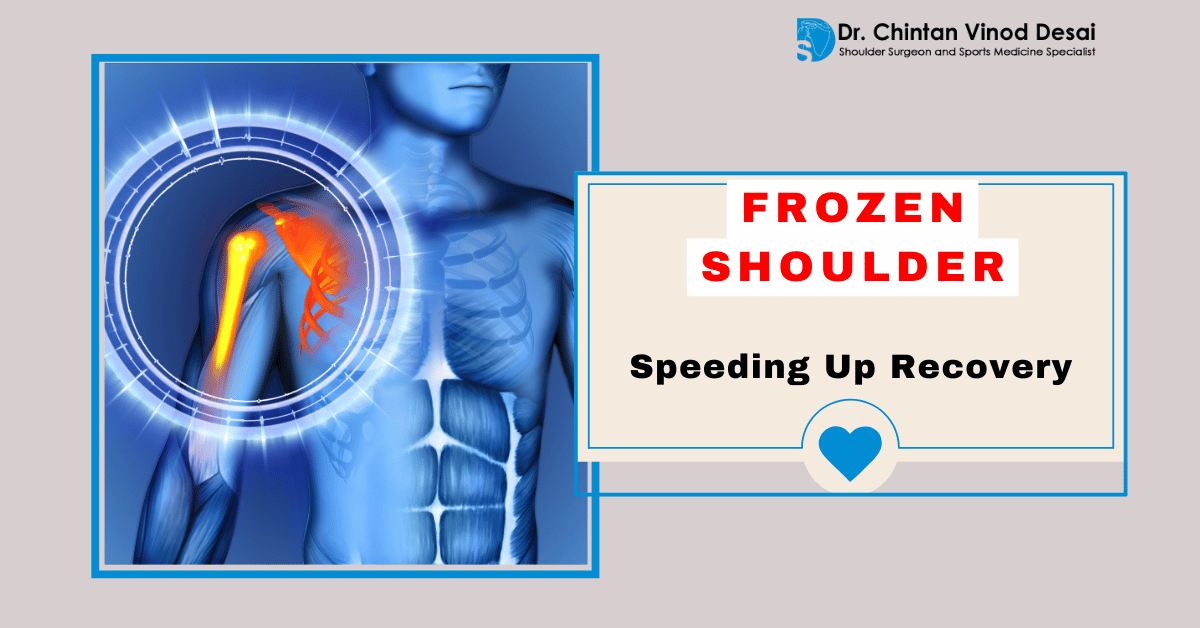Frozen Shoulder Exercises
Frozen shoulder, or adhesive capsulitis, is a condition that causes pain and stiffness in the shoulder joint. Over time, the shoulder becomes harder to move, leading to limited mobility. This condition can affect anyone, but it is most common in people between the ages of 40 and 60, and especially among those with diabetes. If you’re struggling with frozen shoulder, certain exercises can help restore movement and reduce pain. In this blog, we will go through some effective exercises that can help you regain your shoulder’s range of motion.
Understanding Frozen Shoulder
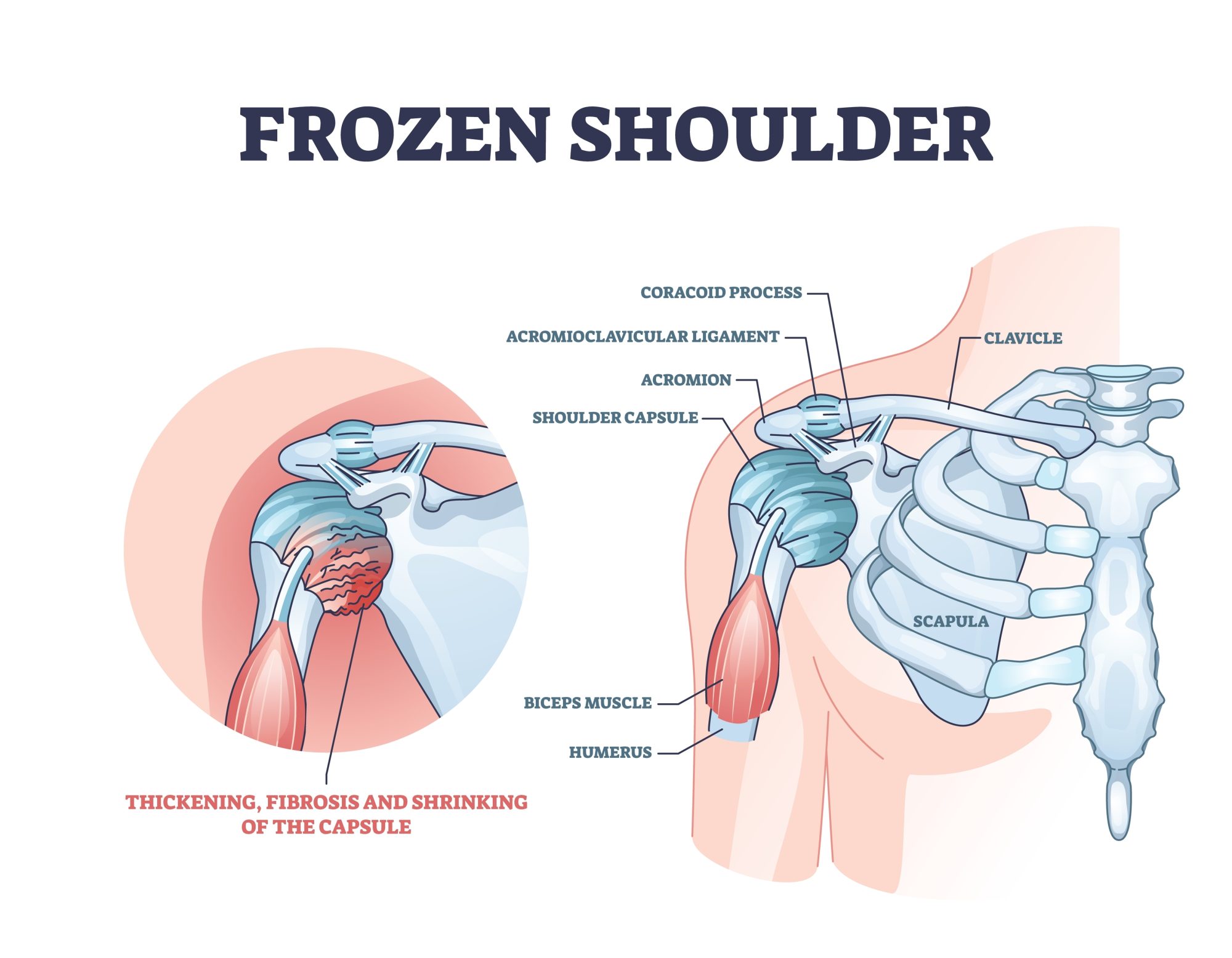
Frozen shoulder happens when the capsule around your shoulder joint thickens and tightens, restricting movement. The exact cause isn’t always clear, but it can develop after an injury, surgery, or as a result of certain health conditions. The three stages of frozen shoulder are:
- Freezing Stage – Pain starts gradually, and movement becomes limited.
- Frozen Stage – Pain might decrease, but stiffness increases, making it difficult to move the shoulder.
- Thawing Stage – The range of motion slowly improves over time.
While it may feel frustrating, frozen shoulder is treatable. Exercises play a crucial role in improving shoulder mobility and reducing pain. These exercises should be done consistently and with care to avoid further injury.
Key Frozen Shoulder Exercises
Below are some exercises to help with the rehabilitation of frozen shoulder. Start slowly and increase intensity gradually. It’s important to listen to your body and stop if any exercise causes sharp pain. Always consult with a healthcare provider before beginning any exercise routine.
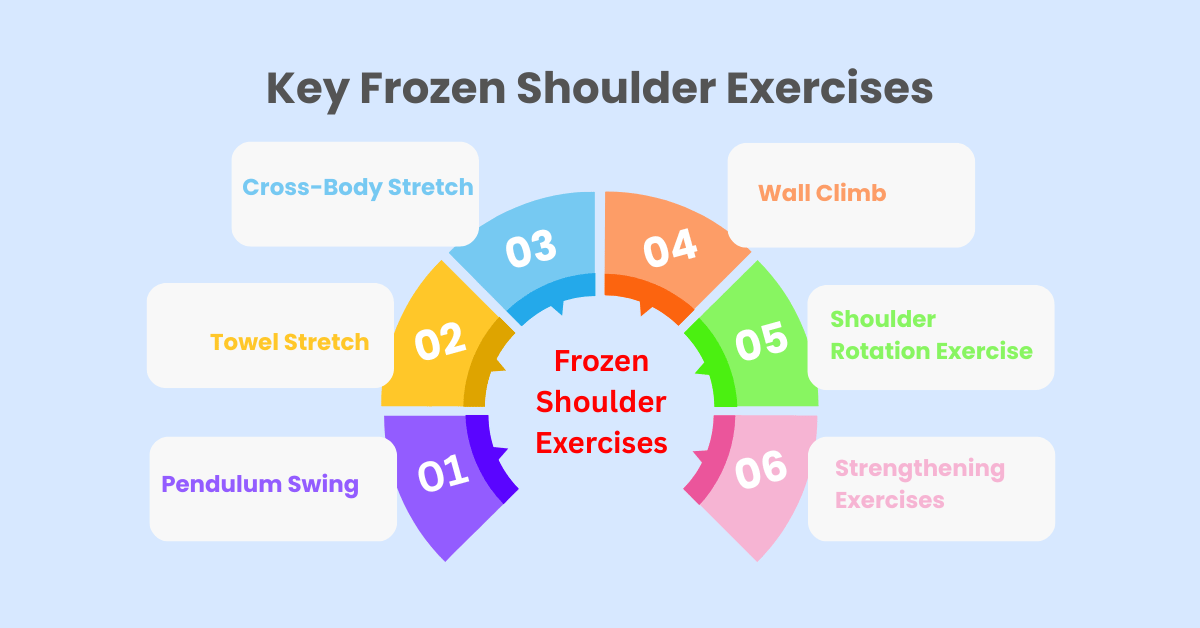
- Pendulum Swing
This is one of the first exercises that may be recommended to help ease the stiffness.
- Stand and lean forward slightly, allowing the affected arm to hang down.
- Gently swing the arm in small circles, first clockwise and then counterclockwise.
- Gradually increase the size of the circles as comfort allows.
- Perform for 30 seconds to 1 minute per direction, 2-3 times a day.
- Stand and lean forward slightly, allowing the affected arm to hang down.
- Towel Stretch
A great way to work on your range of motion.
- Hold a towel behind your back with one hand above your shoulder and the other at your lower back.
- Gently pull the towel upward with your unaffected hand to stretch the affected shoulder.
- Hold for 10-15 seconds, repeating 10 times, 2-3 times a day.
- Hold a towel behind your back with one hand above your shoulder and the other at your lower back.
- Cross-Body Stretch
This exercise can help stretch the shoulder joint and improve flexibility.
- Bring the arm of the affected shoulder across your body.
- Use your unaffected arm to gently pull the affected arm closer to your chest.
- Hold the stretch for 10-15 seconds and repeat 5-10 times.
- Bring the arm of the affected shoulder across your body.
- Wall Climb
The wall climb is excellent for improving shoulder mobility.
- Stand facing a wall and place your fingers on the wall at waist height.
- Slowly “climb” the wall with your fingers as high as possible, raising your arm.
- Hold for a few seconds, then slowly lower your arm back down.
- Repeat 10-15 times, gradually increasing the height as your shoulder mobility improves.
- Stand facing a wall and place your fingers on the wall at waist height.
- Shoulder Rotation Exercise
This exercise helps with shoulder flexibility and is particularly useful for improving internal and external rotation.
- Stand with your arms at your sides and bend your elbows to a 90-degree angle.
- Rotate your arms inward, keeping your elbows close to your body, and then rotate outward.
- Perform 2-3 sets of 10 repetitions.
- Stand with your arms at your sides and bend your elbows to a 90-degree angle.
- Strengthening Exercises
After the shoulder becomes less painful and more flexible, it’s time to start strengthening the muscles around the shoulder joint.
- Use light resistance bands or dumbbells.
- Perform external and internal rotation exercises, starting with low resistance and gradually increasing the intensity as strength improves.
- Use light resistance bands or dumbbells.
Doctor Introduction: Dr. Chintan Vinod Desai
Dr. Chintan Vinod Desai is a consulting shoulder surgeon with expertise in treating various shoulder conditions, including frozen shoulder, impingement, rotator cuff tears, shoulder arthritis, and calcific tendonitis. Based in Mumbai, Dr. Desai has extensive experience using the latest and most effective techniques in shoulder surgery. His approach is focused on personalized care, helping patients return to their normal lives with minimal pain and maximum mobility.
Dr. Desai has treated numerous patients with frozen shoulder, and his commitment to non-invasive methods, along with his surgical expertise when necessary, has helped many regain full or nearly full range of motion in their shoulders.
FAQs
- How long will it take to recover from a frozen shoulder?
The recovery time varies for each person. Generally, it can take anywhere from a few months to a year. The most important factor is consistent rehabilitation and exercise. - Is exercise painful with frozen shoulder?
It’s normal to experience some discomfort while doing exercises, but you should avoid sharp or severe pain. Start with gentle stretches and increase intensity gradually. - Can I work while recovering from frozen shoulder?
Depending on your job, it may be possible to continue working, especially if your job doesn’t require heavy physical labor. However, it’s essential to avoid activities that may aggravate the shoulder. - When should I see a doctor for frozen shoulder?
If your symptoms worsen, or if you experience significant pain, it’s advisable to consult a doctor. A healthcare provider can evaluate the severity of the condition and recommend appropriate treatment. - Can I use heat or ice on my shoulder?
Ice can help reduce inflammation and numb pain, especially during the early stages. Heat can be helpful to relax the muscles once the acute pain subsides. Consult with your doctor for personalized advice on using heat or ice.
Conclusion
Frozen shoulder can be a challenging condition, but with the right approach, it’s entirely possible to regain full movement and alleviate pain. The exercises mentioned above, when performed consistently, can significantly improve shoulder function. Always remember that progress takes time, and patience is key. If you find that your condition is not improving, or if you’re experiencing extreme pain, don’t hesitate to consult a shoulder specialist like Dr. Chintan Vinod Desai, who can guide you through the recovery process. Your shoulder health is important, and the right treatment can get you back to your normal activities sooner than you might think.

